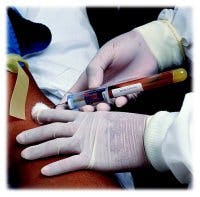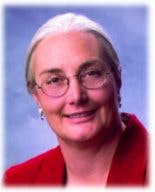When should a phlebotomist ask for help with a difficult draw?
Q: I have a question that no one at my facility seems be able to answer. What is the limit to the number of attempts a phlebotomist should make at collecting blood from a patient beforeasking for a doctor draw?
A: There is no hard-and-fast rule
about how many times a phlebotomist should attempt to draw a patients blood before giving up and asking for help. Most institutions have established internal limits for the number of acceptable attempts, often three or fewer. In setting that limit, the institution must take into account patient comfort, safety and convenience, and the limit should also reflect the needs and concerns of physicians caring for the patient. Giving up too soon and too often will frustrate both patients and doctors and will earn the laboratory a reputation for bad service. Trying too often despite patient discomfort is just as bad. Persisting in an attempt to draw blood after a patient (or, in the case of children, a parent) has requested that the phlebotomist stop virtually guarantees a complaint and might even put the facility at risk for a lawsuit. Find out whether your facility has a policy regarding repeated attempts, including a statement about honoring patient wishes; if it does not, it is time to make one.
Some patients are harder to draw than others and present more risk for complication. It is more difficult to get peripheral access in dehydrated patients and patients with veins that are exhausted from repeated phlebotomy or sclerotic from infusion. Such patients present a problem to the phlebotomist, particularly in the outpatient setting. Your policy should include a mechanism for identifying patients who are likely to be at risk for difficulty in venipuncture so that staff members are alert to the possibility of problems and can react efficiently if difficulty arises.
Your policy should also include a list of acceptable sites for making the attempt to collect blood, as well as those sites that must be avoided. In patients who require attempts at collection in unorthodox sites, make sure that policy does not prohibit such draws. When possible, check with the physician to confirm that collections from such sites are acceptable. This is particularly important with patients in whom there is previous injury or the presence of an infusion or shunt. Previous surgery, such as a mastectomy, might also make an otherwise acceptable site unavailable.
All phlebotomists gain skill as they gain experience, and there are many phlebotomists who were very skilled at handling difficult draw situations. It is a good idea to encourage phlebotomists to ask for assistance from such colleagues before resorting to doctor draw. It is also important to keep tabs on the relative skill of employed phlebotomists, to avoid situations in which a poorly trained or lazy venipuncturist routinely shirks work onto more skilled colleagues. A regular program of in-service training aimed at improving phlebotomists skill levels can also reduce the number of situations in which repeated attempts are required. A mentoring program in which more experienced phlebotomists take new staff in tow to pass on the tricks of the trade is quite valuable, too. A mechanism for discharging phlebotomists who clearly lack skill is also important. Objective standards for drawing skills, including the ability to draw difficult patients, should be part of a regular program of workplace evaluation.
Barbara Harty-Golder is a pathologist-attorney in Sarasota, FL. She directs the clinical laboratory at Health South Rehabilitation Hospital in Sarasota, and maintains a law practice with a special interest in medical law. She writes and lectures extensively on healthcare law, risk management, and human resources management.
January 2003: Vol. 35, No. 1




